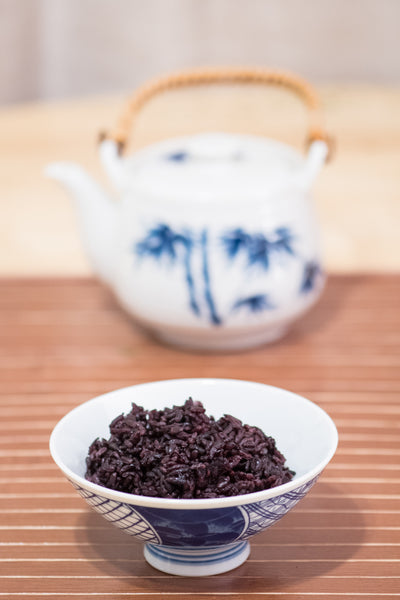Lately nutritionists and foodies alike have been raving about “new” grains and seeds like quinoa, amaranth, spelt, and hemp seeds. While they are new to the average Western consumer, they go back centuries.
With the popularity of low carb diets and the aversion to large scale industrial farming, the mainstays of mankind’s caloric intake for centuries--wheat, rice and corn (maize)—seem to have fallen out of fashion. However even among these common or “boring” grains there is a wide variety. Take for example black rice.
Have you ever tried it? Well after reading this you might want to give it a taste test.

Defining Black Rice
Black rice, sometimes called purple rice, is a variant of Oryza sativa L., the main species of rice and the mostly widely cultivated species of grain.
What is unique is that the bran of black rice is black instead of the typical brown or tan. Eaten as a whole grain, it boasts the same health benefits associated with brown rice, namely higher fiber, protein and micro-nutrient content, while additionally containing powerful antioxidants called anthocynanins.
Anthocyanins are actually the dark purple pigments found in blueberries, blackberries, acai berries and purple eggplants. It is these anthocyanins in the bran of the rice that make it black.

Preparing Black Rice
It's good to rinse the rice a couple of times before cooking. As you do this you will notice that some of the dark purple pigment will bleed out into the water.
Black rice is prepared in the same way you prepare other whole grain rices like brown rice. The key is that you will need to use more water than you would use for cooking white rice and you will probably want to cook it a bit longer too. Doing so will ensure that the cooked rice grains are tender and not too hard.
The exact water to raw rice ratio depends on your rice cooker or whether you boil it in a pot, but a good ballpark is 2 cups of water per each cup of raw rice.
I personally tend to add a bit more water in my rice cooker.
If cooked alone, your black rice will come out black, although if you look carefully you'll notice that it's really a deep purple. Black rice naturally contains a lot of these pigments, so even if you cut your black rice with an equal amount of white or brown rice, the cooked rice will still come out a dark purple color.
Taste and Texture of Black Rice
Black rice tastes similar to brown rice. It has a mild nutty flavor and and for lack of a better word it a bit "buttery." Most varieties, whether Chinese, Japanese or Italian in origin, are medium to short grain and more glutinous, so these attributes also affect the taste and texture.
Short grain black rice can be used as sushi rice and also made into all sorts of East Asian desserts that call for sticky rice.
Typically I like to enjoy the inherent taste of the black rice, but there's nothing to stop you from jazzing things up by cooking the rice in chicken broth or coconut milk.
So whether you like it sweet or savory, why not give black rice a try and add some to color to your plate?
Once you go black rice, you may never go back!


Leave a comment